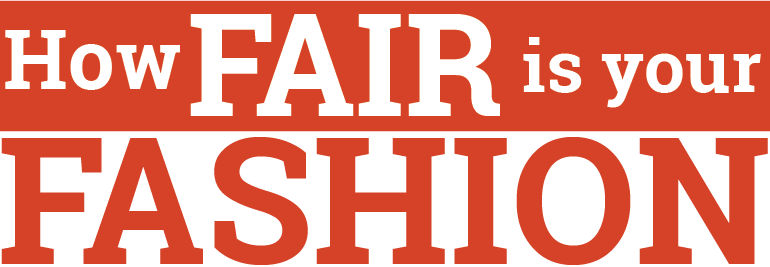
Fast fashion is polluting the world's air and water, filling landfills and overworking and underpaying workers. How does the shirt on your back contribute?
What are you wearing?
T-shirt
Blouse
Other shirt
Dress
Sweater
Coat/outerwear
Pants
Jeans
Shoes
Who made your item?
If your brand is not listed, select 'None of these'.
What is your clothing made out of?
If it's a blend, choose the material with the highest percentage.
Where was your item made?
Is this right? Click to change your selection.
How did you do?
We can’t give you a single grade because clothes are complicated. Check out the information below and visit our Wear and Tear series for more stories about the global garment industry.
Material
B
Read more
Country
Garment workers typically make minimum wage or less. Below, you can see what the International Labor Organization (ILO) estimates a garment worker makes in comparison with the average wage.
Note: PPP is an economic measure used to compare currencies across countries. All wages are monthly and in 2014 dollars.
Read more
Brand
Not good enough
Your brand is unlisted in our application, but you can check the Good On You app, which has thousands of brands.
Read more
Share with your friends
About this project
This quiz is part of Across Women's Lives "Wear and Tear" series. Reporters trace the story of the global garment industry from manufacturing towns in the United States to growing factories in Bangladesh, where working conditions have been slow to change in the wake of the 2013 Rana Plaza disaster that claimed more than 1,100 lives.Sources
The information in this interactive comes from interviews with several international ethical clothing groups.Brand information comes from Good On You, a social impact business that works to educate shoppers about the effect of their purchases on people, the planet and animals. First launched in Australia, the Good On You shopping app expanded to North America in 2017 and provides ethical ratings for more than 1,200 fashion brands. The group continues to grow its database of brands, while working with brands to help them achieve better ratings and better transparency for consumers.
Materials information comes from a Canadian-based organization called TrustedClothes, which connects organizations devoted to sustainable clothing and uses a volunteer network to host local clothing swaps and maintain a website with consumer-focused information and from interviews with materials experts from Fashion Revolution, a global advocacy group working to improve sustainability in the fashion industry.
Country of origin information uses research from a 2014 International Labour Organization report, average wages by country from ILO and country-by-country reports from Betterwork.org, an ILO-backed website looking at working conditions around the world.